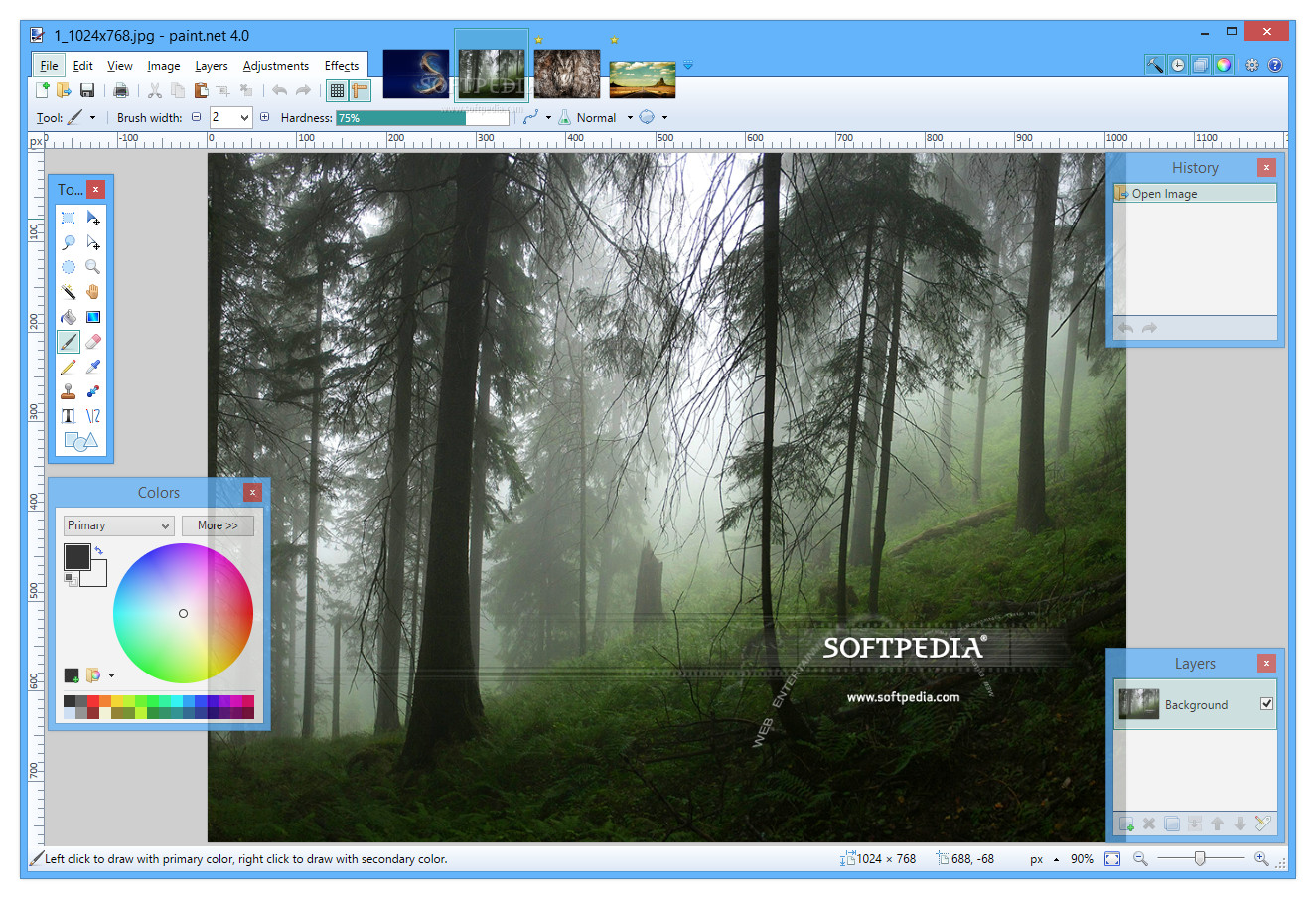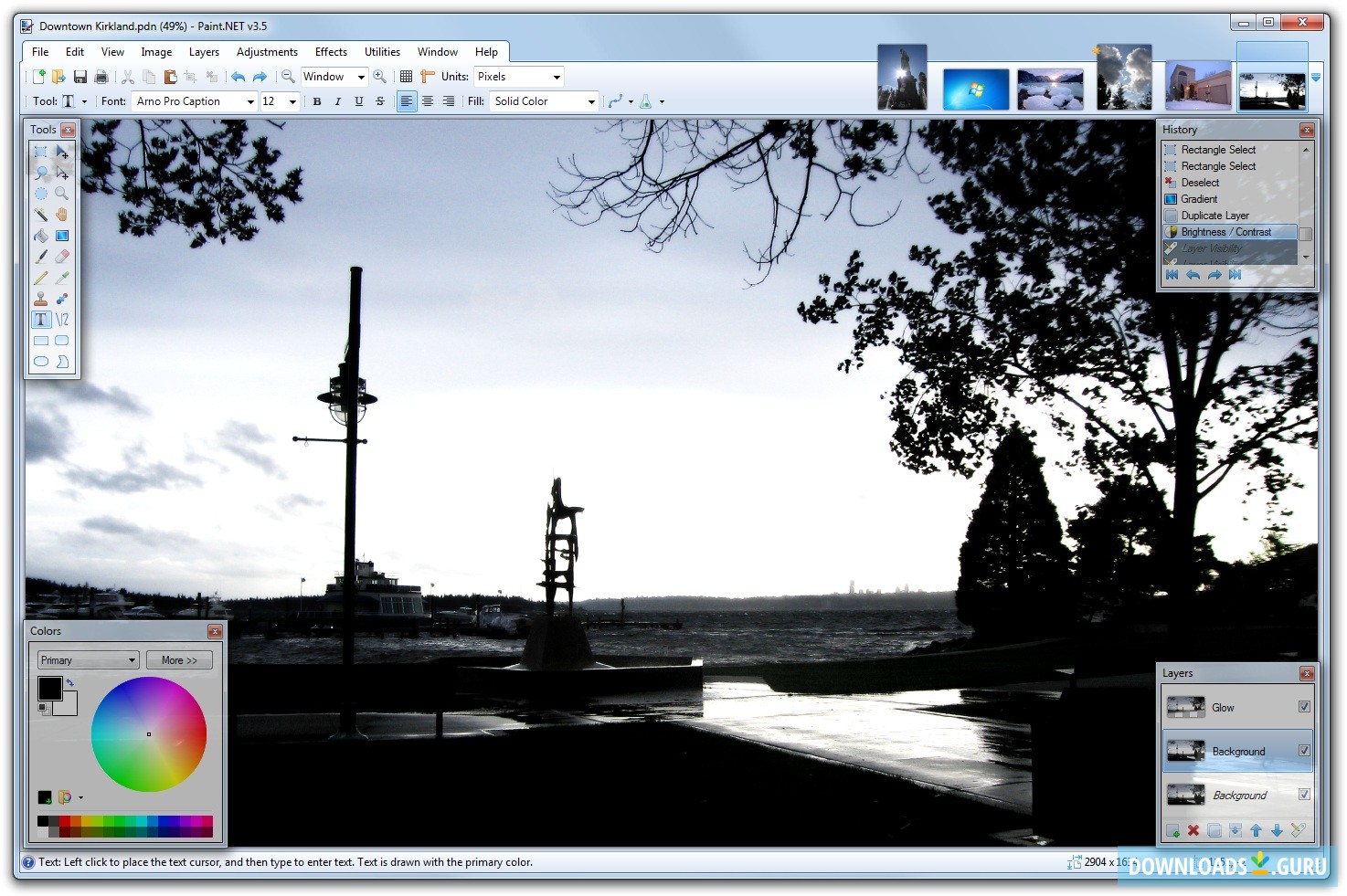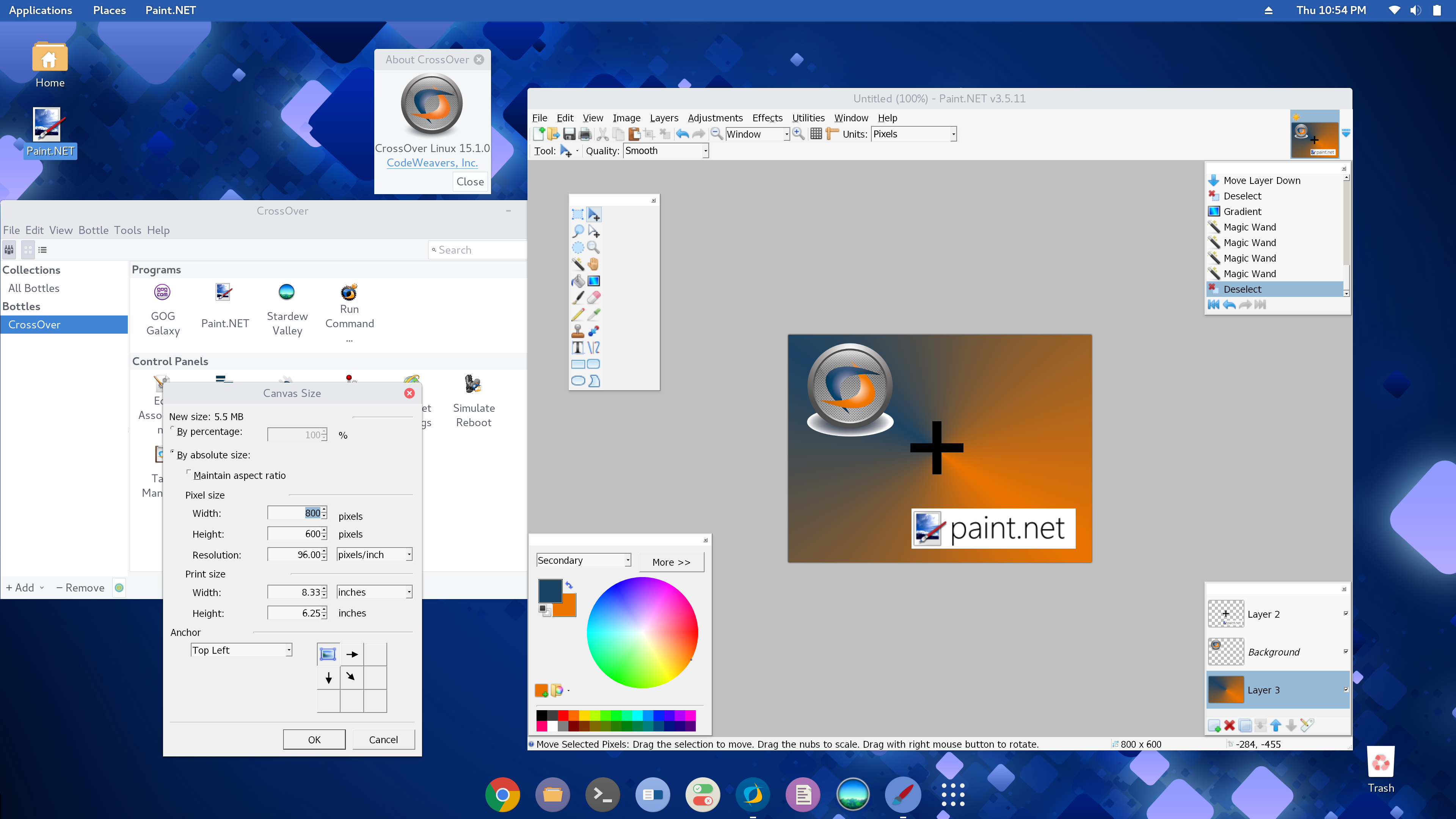
- Paint.net layer window windows 7#
- Paint.net layer window professional#
- Paint.net layer window download#
Press and hold the Ctrl key while you outline the target object. With a little practice, you can master the Lasso tool using the Crtl and Alt keys with the mouse. Orion desktop canvas and menus Using the Lasso Tool Homework: use paint.NET (or Photoshop, or the GIMP) to clean up one of your own photos.ĭigital Photos on Computers is an Osher Lifelong Learning Institute course taught by Dr. You can drag the curve around to bring down highlights without changing anything else, or flip the curve backwards for a psychadelic solarized look. The horizontal axis is the input brightness the vertical axis gives the output brightness. Or use my personal favorite color adjuster, Curves (Layer -> Colors -> Curves).

 You can adjust the image's Brightness and Contrast (Layer -> Colors -> Brightness and Contrast). This tool is useful for erasing small or annoying artifacts (e.g., bugs flying in front of camera, pimples on a teenager's face). Now click and drag to "paint" that area onto another place in the image. Hold down the control key ("ctrl") and click to tell the tool where to read from. The clone tool, which looks like a rubber stamp in the bottom left corner of the toolbar, can be used to copy one area of the image into another area. A flat color usually isn't very convincing, though, so you normally want to turn down the brush hardness to smooth the edges of the edit. To match existing colors in the image, you can use the eyedropper to pick up an existing color. You can draw a flat color using the paintbrush (smooth edges), airbrush (transparent paint), or pencil (hard edges). Blurring (Filters -> Blur -> Gaussian.) is useful to smooth out images, which is good for noisy night images, or like a soft focus filter for older people. Can rotate by any angle by selecting the image, and dragging outside the image. Can rotate by exactly 90 degrees with (Image -> Transform -> Rotate. Deselect by pressing control-D, or clicking outside the selection. Copy and paste the image to move it to a new location. Now that you have part of the image selected, your editing operations only apply within that area. Drag out a rectangle on the image, from one corner to another. Click on a select tool, like the rectangle select tool. Be sure to "Merge layer down" (bottom of Layers panel in bottom right) after doing this, or you'll be stuck editing the new transparent layer! If you "Edit -> Paste into new layer", you can use the eraser tool to soften the edge of the pasted area, which makes it look less pasted-in and more natural. The most common operation is to select part of the image (such as a cat), copy the selected part, and paste it into a different region of the image (making a multi-cat image), or into a different image entirely (such as space, making a cat in space). Move the text around by dragging the little four-direction box at the bottom-right corner of the text. Set the color of the text in the Colors Window. Now click in the image to set a text insertion point, and you can type in text. Click the icon like a black "T" to use the text tool. One simple tool is the Text tool, part of the Tools Window on the left. You can modify the pixels and their colors. The basic model in a raster editor is a rectangular grid of pixels. File -> Open or drag and drop to open a digital camera image (a.
You can adjust the image's Brightness and Contrast (Layer -> Colors -> Brightness and Contrast). This tool is useful for erasing small or annoying artifacts (e.g., bugs flying in front of camera, pimples on a teenager's face). Now click and drag to "paint" that area onto another place in the image. Hold down the control key ("ctrl") and click to tell the tool where to read from. The clone tool, which looks like a rubber stamp in the bottom left corner of the toolbar, can be used to copy one area of the image into another area. A flat color usually isn't very convincing, though, so you normally want to turn down the brush hardness to smooth the edges of the edit. To match existing colors in the image, you can use the eyedropper to pick up an existing color. You can draw a flat color using the paintbrush (smooth edges), airbrush (transparent paint), or pencil (hard edges). Blurring (Filters -> Blur -> Gaussian.) is useful to smooth out images, which is good for noisy night images, or like a soft focus filter for older people. Can rotate by any angle by selecting the image, and dragging outside the image. Can rotate by exactly 90 degrees with (Image -> Transform -> Rotate. Deselect by pressing control-D, or clicking outside the selection. Copy and paste the image to move it to a new location. Now that you have part of the image selected, your editing operations only apply within that area. Drag out a rectangle on the image, from one corner to another. Click on a select tool, like the rectangle select tool. Be sure to "Merge layer down" (bottom of Layers panel in bottom right) after doing this, or you'll be stuck editing the new transparent layer! If you "Edit -> Paste into new layer", you can use the eraser tool to soften the edge of the pasted area, which makes it look less pasted-in and more natural. The most common operation is to select part of the image (such as a cat), copy the selected part, and paste it into a different region of the image (making a multi-cat image), or into a different image entirely (such as space, making a cat in space). Move the text around by dragging the little four-direction box at the bottom-right corner of the text. Set the color of the text in the Colors Window. Now click in the image to set a text insertion point, and you can type in text. Click the icon like a black "T" to use the text tool. One simple tool is the Text tool, part of the Tools Window on the left. You can modify the pixels and their colors. The basic model in a raster editor is a rectangular grid of pixels. File -> Open or drag and drop to open a digital camera image (a.  After installing and starting the program, the basic window layout is a photo in the middle, and a set of tools arranged around it.
After installing and starting the program, the basic window layout is a photo in the middle, and a set of tools arranged around it. Paint.net layer window download#
You'll need some test photos to edit, so click here to download a small subset of my photos.

Paint.NET is a raster photo editor, which is good for modifying contrast and brightness, erasing scratches and disowned uncles, and compositing unrelated photos, such as making Cats In Space. The GNU Image Manipulation Program (GIMP) is free, and runs everywhere (including Mac, Linux, and many others), but the GIMP's interface is a little trickier, so I'll be showing you paint.NET.
Paint.net layer window professional#
The popular program Adobe Photoshop supports professional features like reading camera RAW images, and output to CMYK 4-color printing, but it's a fairly expensive program.
Paint.net layer window windows 7#
The free program paint.NET (download here) is a small and easy to use photo editing program, although it only runs on Windows 7 or higher. Day 3: Photo Editing Day 3: Photo Editing in paint.NET








 0 kommentar(er)
0 kommentar(er)
